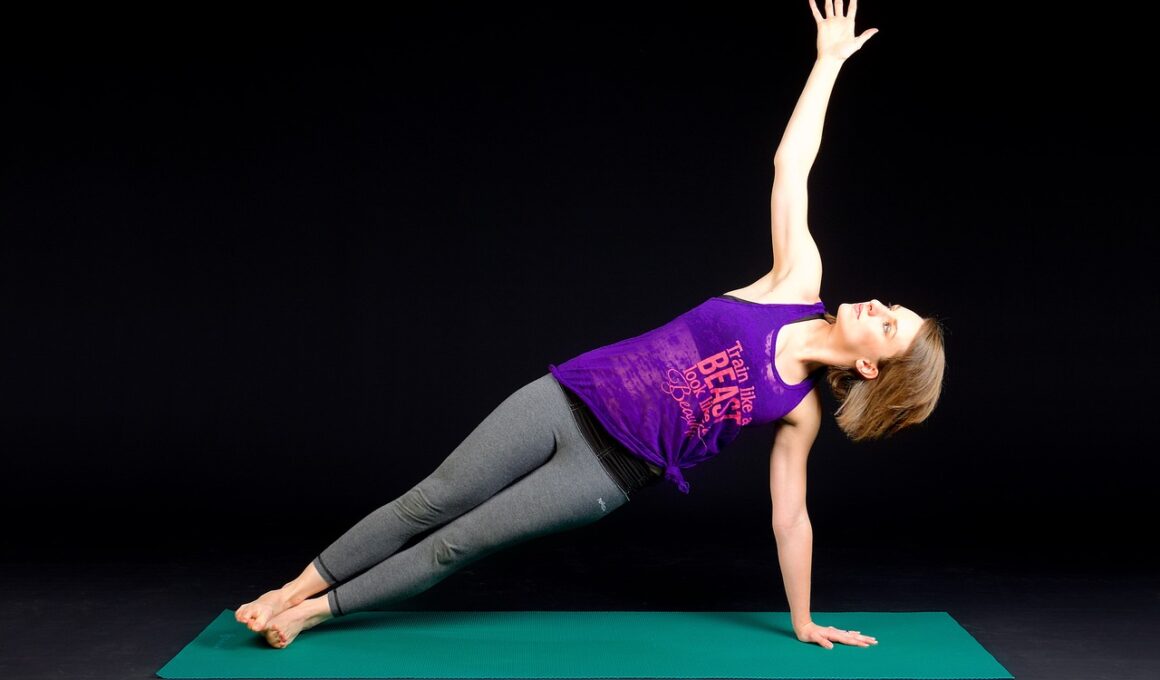Understanding the Role of Core Strength in Maintaining Posture
Maintaining good posture is crucial for overall health, and it is significantly influenced by core strength. The core comprises several muscle groups that stabilize the spine and pelvis. When these muscles are properly engaged, they provide a solid foundation for everyday movements. A strong core helps distribute weight evenly, reducing strain on your back and joints. This balance not only lessens the risk of injury but also enhances performance in physical activities. Many people, however, overlook the importance of core strength in their daily routines. In modern lifestyles, where prolonged sitting is common, the core muscles can become weak and underutilized. This weakness can lead to poor posture, back pain, and discomfort. Engaging in specific exercises designed to strengthen the core is vital for maintaining optimal posture. Effective workouts include planks, bridges, and various stability exercises targeting the abdominal and back muscles. Incorporating these exercises into your daily routine can greatly improve posture and overall well-being. Understanding the fundamental role of core strength empowers individuals to prioritize their health, thus creating a domino effect on their daily activities.
Before we delve into specific exercises, it’s essential to recognize how core strength impacts posture. When the core is weak, the body may compensate by engaging other muscles, often leading to tension and misalignment. Practicing correct posture reduces the strain on the spine. The spine relies on the pelvis, stomach muscles, and back to work harmoniously. A strong core acts as a natural brace. For instance, when bending down to lift something, a stable core helps distribute the load evenly, protecting your back from injury. Women, men, and children alike can benefit from a focus on core strengthening. Surprisingly, many office workers fail to realize how their everyday habits affect their posture. Sitting for extended periods, especially without proper ergonomic support, can weaken core muscles over time. Employers can proactively promote better posture through ergonomic assessments and support programs. Simple changes, such as providing sit-stand desks or ergonomic chairs, can encourage better alignment and core engagement throughout the workday. Understanding and addressing these factors creates a healthier work environment, fostering productivity and well-being.
Exercises to Improve Core Strength
There are numerous core exercises that effectively enhance strength and stability. One popular exercise involves the plank, which engages the entire core. To perform a plank, position yourself face down, resting on your elbows and toes, keeping your body straight. Hold this position for 30 seconds to a minute, ensuring your core is tight. Another effective exercise is the bird dog, which creates stability while promoting balance. To do this, get on all fours, then extend one arm and the opposite leg simultaneously. This engages the core and requires coordination. Introducing bridges is also beneficial. By lying on your back with knees bent, lift the hips toward the ceiling, squeezing the glutes and engaging the abdominal muscles. For a fun twist, consider incorporating stability balls into your routine. By performing exercises on a stability ball, the core must work harder to maintain balance, enhancing strength and promoting good posture. Additionally, including rotational movements with medicine balls or resistance bands further challenges the core. Experimenting with various exercises can keep routines fresh and engaging.
Consistency is Key
Building core strength is not an overnight process. Consistency in practice is fundamental to reaping benefits in both posture and overall health. Setting aside dedicated time each week for core exercises will yield results over time. It’s essential to remember that quality matters more than quantity. Focus on proper form during each exercise to ensure effectiveness and prevent injury. Additionally, complementing core workouts with a well-rounded fitness routine will lead to greater overall physical stability. Cardio, flexibility, and strength exercises work together to support core development and posture in various activities. For best results, aim for a balanced routine that includes cardiovascular activities, resistance training, and stretching to maintain flexibility. Moreover, good nutrition plays a vital role in maintaining muscle strength and overall health. Fueling your body with nutrient-dense foods helps in recovering and rebuilding muscles after workouts. Hydration is equally essential; staying hydrated ensures optimal muscle function. By maintaining focus on core strength, incorporating varied exercises, and ensuring a holistic approach through nutrition, individuals can enhance their postural health significantly, promoting a healthy lifestyle.
The importance of posture cannot be understated. Many do not realize that posture impacts not just appearance but also health and mood. Poor posture can lead to various issues including chronic pain, fatigue, and even depression. Daily activities, such as typing on a computer or using smartphones, can contribute to trends known as tech neck or upper cross syndrome. By focusing on core strength as a component of proper posture, you simultaneously combat these issues, effectively improving your quality of life. Learning to recognize when to correct your posture is vital. Mindful practices, such as taking frequent breaks to stretch or using reminders to adjust your sitting position, can encourage better habits. Consulting with physical therapists or ergonomics experts may provide personalized advice tailored based on individual needs. Small changes produce significant outcomes over time. For instance, adjusting screen height or proper seating position can alleviate pressure on your back and neck. Including daily stretching routines alleviates tension and promotes flexibility. Ultimately, pursuing improved posture through core strength serves as a foundational step toward long-term well-being.
Conclusion
In conclusion, the role of core strength in maintaining good posture is undeniable. Without strong core muscles, one may struggle to maintain healthy alignment. Thus, understanding the direct relationship between core strength and posture enhances awareness of physical health needs. As we’ve explored, incorporating core exercises into daily routines is paramount for success. Moreover, the importance of consistency cannot be emphasized enough; regular engagement ensures progressive results. Practicing mindfulness daily aids in identifying postural discrepancies, enabling corrections that promote healthy alignment while engaged in various activities. Taking responsibility for one’s posture leads to improvements in both physical and mental health, enhancing self-esteem and energy levels. Moreover, as workplaces become more aware of ergonomic practices, employees will benefit from positive changes fostering healthier environments. Strong core muscles do not only support posture, they contribute to overall physical strength and function, extending benefits into all realms of life. By recognizing the integral role of core strength, we pave the way for improved well-being and better quality of life. Start prioritizing core strength today to ensure long-term postural health.
Ultimately, the journey to better posture is an ongoing commitment. As advancements in health and wellness continue, it remains crucial to re-evaluate our routines and embrace practices that cultivate strength and stability. Combining core exercises with a greater awareness of how to maintain posture in daily life plays a central role in our overall health journey. By investing time in strengthening the core, individuals not only empower themselves physically, but also create a mindset focused on wellness. In various aspects of life, from sports to everyday chores, solid core strength provides a fundamental base for effective movement. Encourage others in your home or community to prioritize core strength and its role in overall well-being. Shared goals foster motivation and a sense of community. Whether it’s family or friends, creating an environment emphasizing the importance of fitness can lead to lasting habits. As we strive for better postural health, remember to celebrate progress and small victories. Utilize resources such as online classes, fitness apps, or community groups to stay motivated. Each step taken contributes to a larger goal of achieving better posture, improving health, and enhancing quality of life.
In summary, the benefits of core strength for posture are extensive and necessary for sustaining overall well-being. With dedication and awareness, anyone can improve their posture through strengthening the core. Start small with simple exercises, gradually increasing intensity as strength improves. Familiarize yourself with resources available for proper guidance to support you in this voyage. Online tutorials, fitness coaches, or physiotherapists can provide valuable insights tailored to individual needs. Equally important, fostering a supportive environment boosts motivation and success. Bringing friends and family into the journey of better posture creates camaraderie and shared experiences. It also emphasizes the importance of collective health and well-being. By seeking assistance and continuously educating ourselves, we remain committed to improving posture through core strength. Enduring commitment fosters healthy habits that develop over time. As we consistently pursue this goal, we not only enhance individual health but inspire changes within our community. The ripple effect of proper posture promotes lasting wellness, creating a culture devoted to health and efficacy. Prioritize core strength and posture, setting the foundation for lasting improvements in life.


